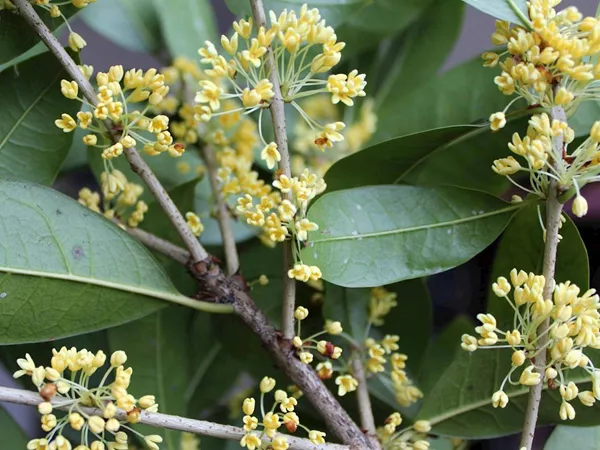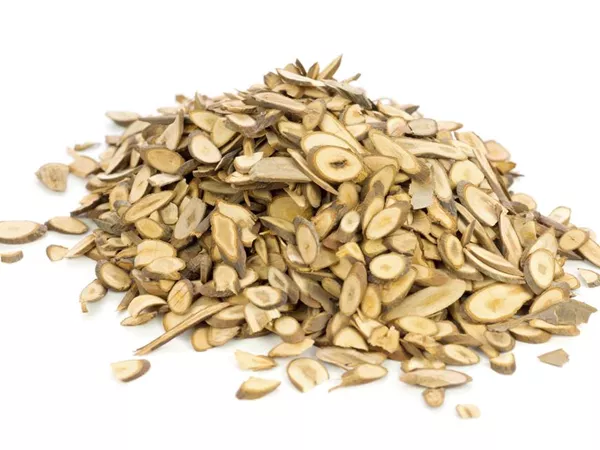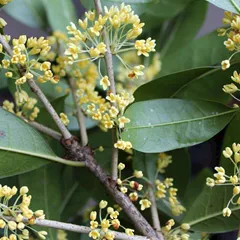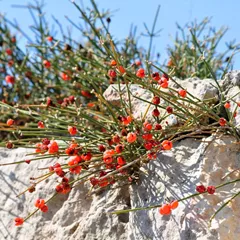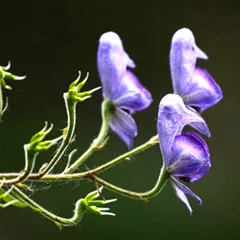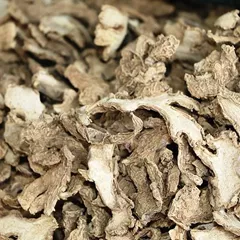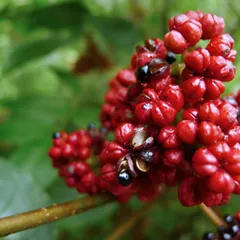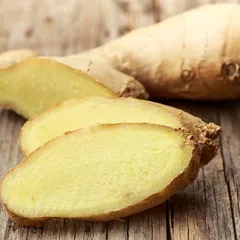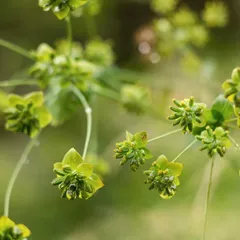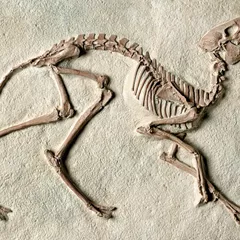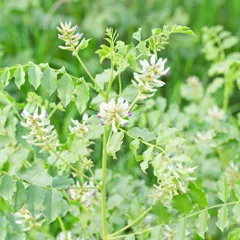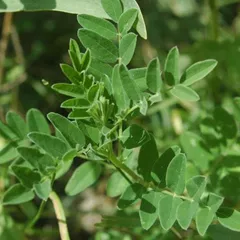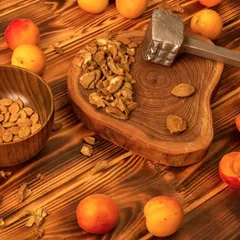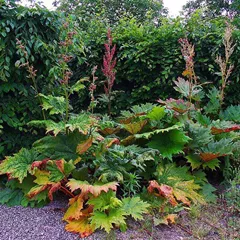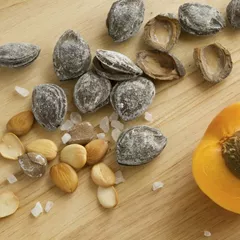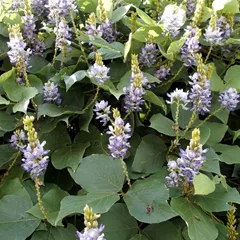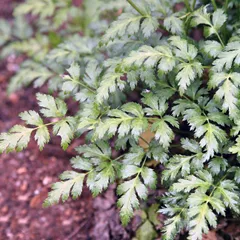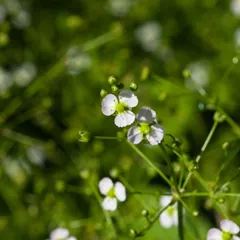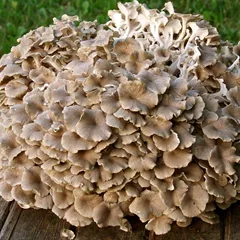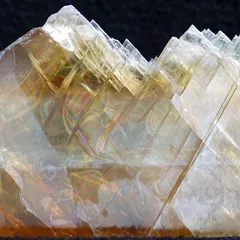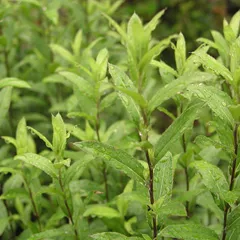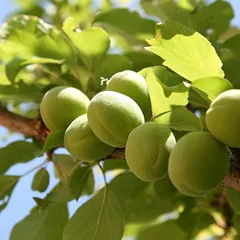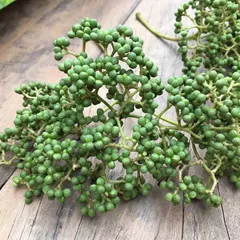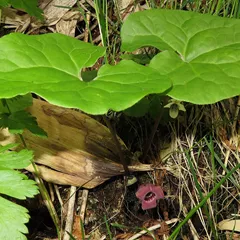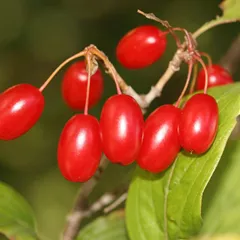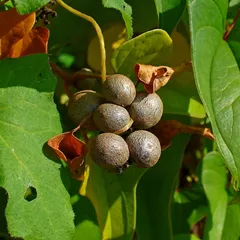Gui Zhi
Gui Zhi
English: Cinnamon twigs
Chinese: 桂枝
Use of Gui Zhi (cinnamon twigs) in TCM
Please note that you should never self-prescribe TCM ingredients. A TCM ingredient is almost never eaten on its own but as part of a formula containing several ingredients that act together. Please consult a professional TCM practitioner, they will be best able to guide you.
Preparation: Remove impurities, wash, soak in water, cut in thick slices and dry.
Dosage: 3 - 9 grams
Main actions according to TCM*: Adjusts the nutritive Ying and defensive Wei Qi. Relieves the Exterior through sweating. Warms and disperses Cold. Removes obstruction of Yang. Promotes the circulation of Yang Qi in the chest. Regulates and moves blood.
Primary conditions or symptoms for which Gui Zhi may be prescribed by TCM doctors*: Common cold Abdominal pain Amenorrhea Arthralgia Edema Palpitations Rheumatoid arthritis Dysmenorrhea
Contraindications*: Do not use for those with Warm febrile diseases, those who are showing Heat signs, and should be used with caution for women who are pregnant or are bleeding heavily.
Common TCM formulas in which Gui Zhi is used*
Gui Zhi Fu Ling Wan
Source date: 220 AD
Number of ingredients: 5 herbs
Formula key actions: Promotes Blood and lymphatic circulation, thus eleminates Blood Stagnation. Softens and resolves hard lumps such as cysts and fibroids.
Conditions targeted*: InfertilityDysmenorrhea and others
Gui Zhi is a king ingredient in Gui Zhi Fu Ling Wan. Like the name indicates, it means it has more power than other ingredients in the formula.
In Gui Zhi Fu Ling Wan, Gui Zhi unblocks the Blood vessels and reduces Blood Stagnation by promoting circulation.
Gui Zhi Shao Yao Zhi Mu Tang
Source date: 220 AD
Number of ingredients: 9 herbs
Formula key actions: Clears Heat and inflammations. Unblocks the flow of Yang Qi and promotes movement (in areas with painful obstruction). Clears Wind and Damp. Relieves pain.
Conditions targeted*: Rheumatoid arthritisConnective tissue disorders and others
Gui Zhi is a king ingredient in Gui Zhi Shao Yao Zhi Mu Tang. Like the name indicates, it means it has more power than other ingredients in the formula.
In Gui Zhi Shao Yao Zhi Mu Tang, Gui Zhi warms and unblocks the Channels.
Xiao Qing Long Tang
Source date: 220 AD
Number of ingredients: 8 herbs
Formula key actions: Releases the Exterior. Transforms Phlegm-Fluids. Warms the Lungs. Directs Rebellious Qi downward.
Conditions targeted*: Upper respiratory tract infectionsBronchitis and others
Gui Zhi is a king ingredient in Xiao Qing Long Tang. Like the name indicates, it means it has more power than other ingredients in the formula.
In Xiao Qing Long Tang, Gui Zhi releases the Exterior, opens the Blood vessels, and promotes Qi transformation.
Together with the other key herb in this formula, Ephedra (Ma Huang), the two herbs disperse Wind-Cold from the Exterior, promote water metabolism to remove Phlegm-Fluids, disseminate Lung Qi, and open the vessels to treat wheezing and body aches.
Wen Jing Tang
Source date: 220 AD
Number of ingredients: 12 herbs
Formula key actions: Warms the Uterus and vessels. Nourishes Blood. Dispels Cold. Dispels Blood Stagnation.
Conditions targeted*: Dysfunctional uterine bleedingUterine hypoplasia and others
Gui Zhi is a king ingredient in Wen Jing Tang. Like the name indicates, it means it has more power than other ingredients in the formula.
In Wen Jing Tang, Gui Zhi enters the Food Qi (nutritive Qi) to improve circulation in the Blood vessels and disperse Cold.
Shen Qi Wan
Source date: 220 AD
Number of ingredients: 8 herbs
Formula key actions: Tonifies and warms Kidney Yang.
Conditions targeted*: Diabetes mellitusHyperaldosteronism and others
Gui Zhi is a king ingredient in Shen Qi Wan. Like the name indicates, it means it has more power than other ingredients in the formula.
In Shen Qi Wan, Gui Zhi is acrid, sweet, and warm. It tonifies Yang, expels Cold and strengthens the Fire of the Gate of Life. It benefits the joints, warms the channels, and unblocks the vessels. It also promotes Qi transformation in the Bladder. Some sources have Rou Gui (Cinnamon bark) instead of Gui Zhi.
Dang Gui Si Ni Tang
Source date: 220 AD
Number of ingredients: 7 herbs
Formula key actions: Warms the Channels. Disperses Cold. Nourishes the Blood. Unblocks the Blood vessels.
Conditions targeted*: Vascular headacheRaynaud's disease and others
Gui Zhi is a king ingredient in Dang Gui Si Ni Tang. Like the name indicates, it means it has more power than other ingredients in the formula.
In Dang Gui Si Ni Tang, Gui Zhi warms the Channels and disperses Cold from the nutritive Qi. In addition, together with White peony root, they harmonize the protective and nutritive Qi so as to eliminate Cold from the more superficial levels of the body.
Gui Zhi Tang
Source date: 220 AD
Number of ingredients: 5 herbs
Formula key actions: Releases pathogens from the muscle layer. Regulates the Nutritive and Protective Qi.
Conditions targeted*: Common coldInfluenza and others
Gui Zhi is a king ingredient in Gui Zhi Tang. Like the name indicates, it means it has more power than other ingredients in the formula.
In Gui Zhi Tang, Gui Zhi releases externally-contracted Wind-Cold from the muscle layer
Chai Hu Jia Long Gu Mu Li Tang
Source date: 220 AD
Number of ingredients: 12 herbs
Formula key actions: Unblocks the three Yang warps. Sedates and calms the Spirit.
Conditions targeted*: NeurosisDepression and others
Gui Zhi is a king ingredient in Chai Hu Jia Long Gu Mu Li Tang. Like the name indicates, it means it has more power than other ingredients in the formula.
In Chai Hu Jia Long Gu Mu Li Tang, Gui Zhi is a greater Yang herb helps in resolving the problems in the superficial levels and for promoting the flow of Yang Qi for relieving the heaviness sensation in the body.
Chai Hu Gui Jiang Tang
Source date: 220 AD
Number of ingredients: 7 herbs
Formula key actions: Harmonizes and releases the Lesser Yang. Removes Stagnation . Warms the Interior. Dispels Cold.
Conditions targeted*: Common coldMalaria and others
Gui Zhi is a king ingredient in Chai Hu Gui Jiang Tang. Like the name indicates, it means it has more power than other ingredients in the formula.
In Chai Hu Gui Jiang Tang, Gui Zhi removes Qi Stagnation in the Exterior. Cinnamon twigs disperse newly-contracted Wind-Cold.
Feng Yin Tang
Source date: 220 AD
Number of ingredients: 12 herbs
Formula key actions: Extinguishes and pacifies Wind with heavy medicinals. Calms the Mind. Clears Heat.
Conditions targeted*: EpilepsyStroke and others
Gui Zhi is a king ingredient in Feng Yin Tang. Like the name indicates, it means it has more power than other ingredients in the formula.
In Feng Yin Tang, Gui Zhi dispels Heat from the muscle layer and, together with Liquorice, protects the Yang of the Heart, assisting in the ascent of the clear Yang, while also directing
turbid Yin downward.
Huang Qi Gui Zhi Wu Wu Tang
Source date: 220 AD
Number of ingredients: 5 herbs
Formula key actions: Augments the Qi. Warms and harmonizes the channels. Unblocks painful obstruction .
Conditions targeted*: PolyneuritisScleroderma and others
Gui Zhi is a king ingredient in Huang Qi Gui Zhi Wu Wu Tang. Like the name indicates, it means it has more power than other ingredients in the formula.
In Huang Qi Gui Zhi Wu Wu Tang, Gui Zhi warms the Nutritive Qi in the Channels and unblocks the Yang.
In this formula, it is also helped by the other key herb Milkvetch root on augmenting the Qi and stimulating the protective Yang.
On the other hand, it increases Milkvetch root's capacity of firming up the Exterior without retaining pathogenic Qi .
In combination, the two key herbs synergistically augment the Qi , warm the Yang and harmonize the Blood.
Gui Zhi Ren Shen Tang
Source date: 220 AD
Number of ingredients: 5 herbs
Formula key actions: Releases the Exterior. Warms the Interior. Augments the Qi. Eliminates focal distention .
Conditions targeted*: Peptic ulcersChronic cholecystitis and others
Gui Zhi is a king ingredient in Gui Zhi Ren Shen Tang. Like the name indicates, it means it has more power than other ingredients in the formula.
In Gui Zhi Ren Shen Tang, Gui Zhi is acrid, warming. It releases the Exterior through its warming action on the greater Yang
warp, but also helps to direct turbid Qi downward by means of its acrid fragrance.
It is used to focus entirely on the Exterior.
Tao He Cheng Qi Tang
Source date: 220 AD
Number of ingredients: 5 herbs
Formula key actions: Dispels Heat and. Eliminates Blood Stagnation.
Conditions targeted*: LeiomyomaRetained placenta and others
Gui Zhi is a deputy ingredient in Tao He Cheng Qi Tang. This means it helps the king ingredient(s) treat the main pattern or it serves to treat a coexisting pattern.
In Tao He Cheng Qi Tang, Gui Zhi warms the sinews, unblocks the vessels, and dispels retained Blood from the Lower Burner. In doing so it helps the Peach kernels eliminate Blood Stagnation.
Ling Gui Zhu Gan Tang
Source date: 220 AD
Number of ingredients: 4 herbs
Formula key actions: Warms and transforms Phlegm-Fluids. Strengthens the Spleen. Resolves Dampness.
Conditions targeted*: Meniere's diseaseBasilar insufficiency and others
Gui Zhi is a deputy ingredient in Ling Gui Zhu Gan Tang. This means it helps the king ingredient(s) treat the main pattern or it serves to treat a coexisting pattern.
In Ling Gui Zhu Gan Tang, Gui Zhi warms the Yang and improves Qi's ability to transform the thin mucus and Phlegm. It also directs the rebellious Qi downward.
Its combination with Fu Ling (Poria-cocos mushroom) is a delicate way of dealing with mucus and Phlegm accumulation due to cold. Fu Ling increases the Body Fluids circulation, while Gui Zhi warms the Qi flow.
Ma Huang Tang
Source date: 220 AD
Number of ingredients: 4 herbs
Formula key actions: Releases exterior cold. Treats wheezing.
Conditions targeted*: InfluenzaRheumatic fever and others
Gui Zhi is a deputy ingredient in Ma Huang Tang. This means it helps the king ingredient(s) treat the main pattern or it serves to treat a coexisting pattern.
In Ma Huang Tang, Gui Zhi releases the exterior, especially the muscle layer. It also warms and invigorates the flow in the channels.
Like the key ingredient Ephedra, It is also a diaphoretic. When the two ingredients are combined, they are very effective in releasing the exterior.
Ge Gen Tang
Source date: 220 AD
Number of ingredients: 7 herbs
Formula key actions: Releases the Exterior and muscle layer. Forms Body Fluids.
Conditions targeted*: Common coldCervical spine disease and others
Gui Zhi is a deputy ingredient in Ge Gen Tang. This means it helps the king ingredient(s) treat the main pattern or it serves to treat a coexisting pattern.
In Ge Gen Tang, Gui Zhi supports the chief herb Kudzu root in releasing the Exterior and muscle layer.
Zai Zao San
Source date: 1445 AD
Number of ingredients: 12 herbs
Formula key actions: Tonfies the Yang . Augments the Qi. Induces sweating. Releases the Exterior.
Conditions targeted*: Rheumatic feverCommon cold and others
Gui Zhi is a deputy ingredient in Zai Zao San. This means it helps the king ingredient(s) treat the main pattern or it serves to treat a coexisting pattern.
In Zai Zao San, Gui Zhi releases the Exterior by scattering Cold and activating the Yang along with Prepared aconite and Wild ginger.
Huang Lian Tang
Source date: 220 AD
Number of ingredients: 7 herbs
Formula key actions: Regulates Cold and Heat. Harmonizes the Stomach. Directs Rebellious Qi downward.
Conditions targeted*: GastritisHyperacidic stomach and others
Gui Zhi is a deputy ingredient in Huang Lian Tang. This means it helps the king ingredient(s) treat the main pattern or it serves to treat a coexisting pattern.
In Huang Lian Tang, Gui Zhi is acrid, warm and dispersing herb which expel Cold from the lower body to stop pain.
It also enters the nutritive Qi to remove Stagnation and harmonize its interaction with the Protective Yang.
Wu Ling San
Source date: 220 AD
Number of ingredients: 5 herbs
Formula key actions: Promotes urination,. Warms the Yang. Strengthens the Spleen. Promotes Qi transformation function. Drains Dampness. Clears edema.
Conditions targeted*: EdemaGlomerulonephritis and others
Gui Zhi is an assistant ingredient in Wu Ling San. This means that it either serves to reinforces the effect of other ingredients or it moderates their toxicity.
In Wu Ling San, Gui Zhi serves as both an assistant and envoy in this formula. When the retention of Dampness obstructs the circulation of Fluids, the Kidneys and Bladder may be unable to transform them. Cinnamon twigs are used to warm the Fire at the gate of vitality, which is like adding firewood under the cauldron. Not only does this assist the Bladder in transforming and discharging urine, it also helps the Spleen Qi to raise the clear, thus facilitating the movement and 'steaming' of the Fluids by the Kidneys. In this respect, it serves as an envoy to the Kidneys and Bladder.
As an assistant, it also helps to dispel pathogenic influences from the Exterior and thereby release the exterior aspects of the greater Yang-warp disorder.
Da Qing Long Tang
Source date: 220 AD
Number of ingredients: 7 herbs
Formula key actions: Promotes sweating. Releases the Exterior. Clears Interior Heat.
Conditions targeted*: Upper respiratory tract infectionsInfluenza and others
Gui Zhi is an assistant ingredient in Da Qing Long Tang. This means that it either serves to reinforces the effect of other ingredients or it moderates their toxicity.
In Da Qing Long Tang, Gui Zhi works together with Fresh ginger (Sheng Jiang), another assistant herb of this formula, to assist the key herb - Ephedra (Ma Huang) - in strongly opening the pores, inducing sweating, and scattering Wind-Cold.
Wei Ling Tang
Source date: 1481 AD
Number of ingredients: 9 herbs
Formula key actions: Promotes urination. Warms the Yang. Strengthens the Spleen. Drains Dampness. Promotes the movement of Qi. Harmonizes the Stomach.
Conditions targeted*: EdemaGastritis and others
Gui Zhi is an assistant ingredient in Wei Ling Tang. This means that it either serves to reinforces the effect of other ingredients or it moderates their toxicity.
In Wei Ling Tang, Gui Zhi serves as both an assistant and envoy in this formula. When the retention of Dampness obstructs the circulation of Fluids, the Kidneys and Bladder may be unable to transform them. Cinnamon twigs are used to warm the Fire at the gate of vitality, which is like adding firewood under the cauldron. Not only does this assist the Bladder in transforming and discharging urine, it also helps the Spleen Qi to raise the clear, thus facilitating the movement and 'steaming' of the Fluids by the Kidneys. In this respect, it serves as an envoy to the Kidneys and Bladder.
As an assistant, it also helps to dispel pathogenic influences from the Exterior and thereby release the exterior aspects of the greater Yang-warp disorder.
Wu Mei Wan
Source date: 220 AD
Number of ingredients: 9 herbs
Formula key actions: Warms the Organs. Drains Heat. Calms roundworms. Drains the Liver. Calms the Stomach.
Conditions targeted*: AscariasisBiliary ascariasis and others
Gui Zhi is an assistant ingredient in Wu Mei Wan. This means that it either serves to reinforces the effect of other ingredients or it moderates their toxicity.
In Wu Mei Wan, Gui Zhi warms the Interior and is very useful in dispersing internal Cold.
Zhi Gan Cao Tang
Source date: 220 AD
Number of ingredients: 10 herbs
Formula key actions: Augments the Qi. Nourishes Yin. Nourishes the Blood. Restores the pulse.
Conditions targeted*: Irregular heartbeatsSick sinus syndrome and others
Gui Zhi is an assistant ingredient in Zhi Gan Cao Tang. This means that it either serves to reinforces the effect of other ingredients or it moderates their toxicity.
In Zhi Gan Cao Tang, Gui Zhi unblocks the flow of Heart Qi. Its combination with Ren Shen strengthens this effect.
This is an important aspect of the treatment of palpitations, and Gui Zhi is found in every formula devised by Zhang Zhong-Jing for treating this symptom.
Ba Wei Di Huang Wan
Source date: 220 AD
Number of ingredients: 8 herbs
Formula key actions: Tonifies Yang. Warms the Kidneys and lower extremities.
Conditions targeted*: Diabetes mellitusDiabetes insipidus and others
Key TCM concepts behind Gui Zhi's properties
In Traditional Chinese Medicine (TCM), Gui Zhi belongs to the 'Warm/Acrid herbs that release the Exterior' category. Herbs that release the Exterior aim to to treat the early stages of diseases that affect the upper respiratory tract, the eyes, the ears, the nose, the throat or the skin. TCM believes that External diseases such as colds or allergies can only invade the body if the External environment overwhelms our Wei Qi (the TCM version of the immune system). In order to counteract this invasion Warm/Acrid herbs aim to induce sweating by increasing the flow of sweat to our capillary pores. The belief is that this will expel the disease from the body and stop it from invading further.
As suggested by its category Gui Zhi is Warm in nature. This means that Gui Zhi tends to help people who have too much 'Cold' in their body, although with less effect than a plant that would be Hot in nature. Balance between Yin and Yang is a key health concept in TCM. Those who have too much Cold in their body are said to either have a Yin Excess (because Yin is Cold in nature) or a Yang Deficiency (Yang is Hot in Nature). Depending on your condition Gui Zhi can help restore a harmonious balance between Yin and Yang.
Gui Zhi also tastes Pungent and Sweet. The so-called 'Five Phases' theory in Chinese Medicine states that the taste of TCM ingredients is a key determinant of their action in the body. Pungent ingredients like Gui Zhi tends to promote the circulations of Qi and Body Fluids. That's why for instance someone tends to sweat a lot when they eat spicy/pungent food. On the other hand Sweet ingredients tend to slow down acute reactions and detoxify the body. They also have a tonic effect because they replenish Qi and Blood.
The tastes of ingredients in TCM also determine what Organs and Meridians they target. As such Gui Zhi is thought to target the Heart, the Lung and the Spleen. In addition to regulating Blood flow, in TCM the Heart is believed to be the store of the 'Mind' which basically refers to someone's vitality. In addition to performing respiration, the Lungs are thought in TCM to be a key part of the production chain for Qi and the Body Fluids that nourish the body. The Spleen assists with digestion, Blood coagulation and Fluids metabolism in the body.
Research on Gui Zhi
5 g dose of Cassia cinnamon may reduce the peak blood glucose response and improve glucose tolerance following an oral glucose tolerance test.1
Both vivo and vitro results indicated Guzhi Fuling capsules (containing cinnamon twigs) possessed a significant spasmolytic effect on uterine titanic contraction.2
Sources:
1. Gutierrez JL, Bowden RG, Willoughby DS. ( 2016). Cassia Cinnamon Supplementation Reduces Peak Blood Glucose Responses but Does Not Improve Insulin Resistance and Sensitivity in Young, Sedentary, Obese Women. J Diet Suppl. , 13(4):461-71. doi: 10.3109/19390211.2015.1110222. Epub 2015 Dec 30.
2. Lan S, Liu L, Zong S, Wang Z, Zhou J, Xu Z, Ding G, Xiao W, Kou J. (2016) Traditional Chinese medicine Guzhi Fuling capsule used for therapy of dysmenorrhea via attenuating uterus contraction. J Ethnopharmacol 191: 273-279.
Use of Gui Zhi as food
Gui Zhi is also eaten as food.

